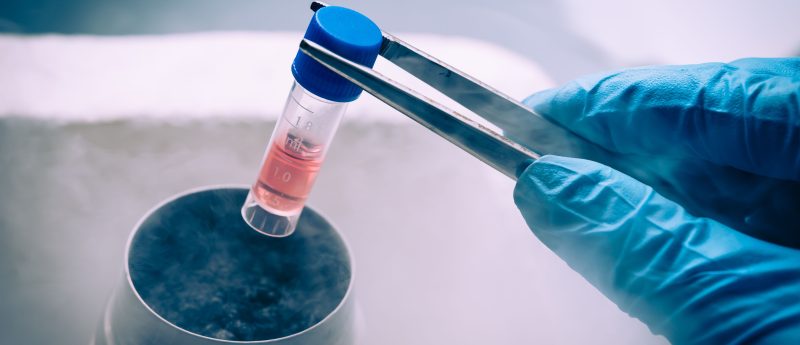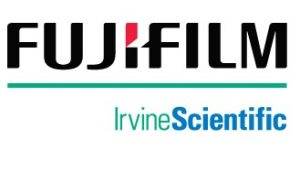Realizing the potential of cryopreservation with DMSO-free media: an interview with Robert Newman


As the Chief Scientific Officer for FUJIFILM Irvine Scientific (CA, USA), Robert Newman leads scientific strategy, drives global product development and expands research and development capability for the company. He was previously Senior Director for R&D at American Type Culture Collection (VA, USA) and R&D Manager of Stem Cells at BD (NJ, USA), and holds a Ph.D. in Biochemistry and Molecular Biology from Georgetown University (Washington, D.C., USA).
In this interview, we spoke to Robert about how cryopreservation processes have evolved over time and what steps of the cryopreservation procedure have the potential for optimization. Robert also gives his insights on why it is so important to utilize DMSO-free media in cell and gene therapy applications.
Please introduce yourself and your company/institution.
My name is Robert Newman and I am Chief Scientific Officer for FUJIFILM Irvine Scientific (CA, USA). FUJIFILM Irvine Scientific is a worldwide leader in the innovation and manufacture of cell culture media, reagents, and medical devices for researchers and clinicians. The company provides unrivaled service and quality to scientists working in cell therapy and regenerative medicine, assisted reproductive technology and cytogenetics, and industrial cell culture for the large-scale production of biotherapeutics and vaccines. Irvine Scientific adheres to both ISO and FDA regulations and operates dual cGMP manufacturing facilities in California, USA and Tokyo, Japan. The company’s consultative philosophy combined with expertise in cell culture and compliance provides customers with unique capabilities and support.
How has the process of cryopreservation changed in the last 10 years?
During the last ten years, the process of cryopreservation has been optimized in several aspects. Firstly, we learned the specific optimal freezing and thawing rates for many different cell types. There were also movements to control excessive ice formation using ice-free cryopreservation techniques based on vitrification. in addition, there have been exemplary achievements in holding cryoprotectant toxicity at acceptable levels. In more recent years, we started using metabolic inhibitors and stress tolerance enhancers in the cryopreservation process and have had successful experiences in eliminating dimethyl sulfoxide (DMSO) from the cryopreservation process.
How important is it to have DMSO-free media for cell and gene therapy customers?
It is essential to provide DMSO-free media, particularly for cell and gene therapy customers, because DMSO has a number of undesired biological effects.
The first concern is patient safety. Direct administration of DMSO-containing cellular products can be associated with many side effects, such as nausea, vomiting, hypertension, hypotension, sedation, or headache. Furthermore, there is evidence of more serious complications such as acute renal failure, cardiac arrhythmia, and encephalopathy.
Secondly, DMSO has some undesired effects on the survival and function of cells in cell cultures. This loss in viability can have impacts on the development and manufacture of cell and gene therapy products.
What is the impact of a cryoprotectant on cell activity?
An ideal cryoprotectant should not affect cell activity, and post-thaw cells should maintain their activity.
What differentiates your cryomedia compared to other commercially available products?
The latest version of our cryomedia is DMSO-free and suitable for freezing a variety of cell types, ranging from human mesenchymal stem cells and induced pluripotent stem cells to rat neural progenitor cells. Our cryopreservation products are chemically defined, protein-free GMP-compliant solutions.
Do you offer toxicological study results for your current cryomedia?
Yes, we have studied our current cryomedia regarding any possible toxic effect on different kinds of cells.
What step(s) of the cryopreservation process stand out as areas to be optimized?
Suboptimal cryopreservation can have numerous negative impacts on cell and gene therapy production, including batch-to-batch variability, loss of viability and limited post-thaw cell function. A number of critical areas for optimization include:
- Finding the optimal freezing and thawing rates
- Controlling excessive ice formation
- Limiting disproportionate mechanical/thermodynamic stress
- Controlling excessive injury from chilling
- Creating acceptable repair and revival protocols
How do you see cryopreservation in regenerative medicine evolving in the next five years?
I think we will find/make more efficient cryoprotectant agents. We will also have more achievements in ice-free cryopreservation techniques based on vitrification, which will enable us to decrease freezing-related cell and tissue injuries.
Disclaimer
The opinions expressed in this interview are those of the interviewee and do not necessarily reflect the views of RegMedNet or Future Science Group.
